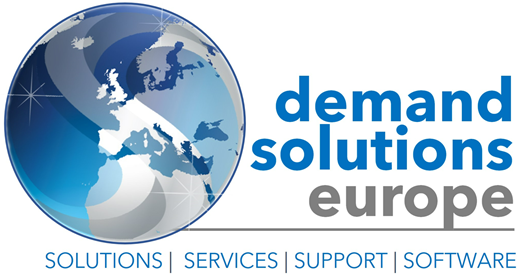
How to optimize your supply chain network?
There are a lot of ways to optimize your supply chain network, and every company has different needs. The goal of this article is to give you an overview of the most important aspects that should be considered in order to improve your supply chain. If you want more information or want help with the implementation, please contact us!
Evaluate your current supply chain
The first step in optimizing your supply chain network is to understand your current supply chain. To do this, you need to understand the following:
- Understanding your supply chain
- Understanding your suppliers
- Understanding your customers
- Understanding the risks involved with each stage of the process flow and how they can be mitigated or eliminated altogether.
The first part seems easy; it’s just a matter of asking questions. For example, if you’re looking at an issue with supplier quality control, find out what happens when a batch doesn’t pass muster—where does it go? If there’s no good answer for this question (and there usually isn’t), then that’s a problem waiting to happen again!
Analyse your suppliers
Suppliers are the lifeblood of your supply chain network. They are responsible for sourcing raw materials and components, as well as delivering finished goods to your customers. However, suppliers can be a bit like a black box – you don’t always know what they do or how they operate. In order to optimise your supply chain network, it is important that you understand this relationship better.
To start with, ask yourself: “Are my suppliers really adding value?” If not, then maybe it is time to look at other options or at least renegotiate their contract terms so that they have an incentive to perform better in future. Next comes the question of “Who exactly are my suppliers?” This can be answered through supplier identification tools such as Supplier Relationship Management (SRM) software which provides visibility across multiple supply chains; enabling organisations to analyse purchasing trends over time in order provide valuable insight into where improvements need made so that efficiency gains can be achieved within each individual sector – something which will ultimately save money when implemented correctly according to Lidl’s Director of Supply Chain Operations Gareth Morrissey during his talk titled “Using technology for competitive advantage”.
Identify key success factors
The first step in building your supply chain is to determine the key success factors for each of its stakeholders. For example, your supply chain’s success may be defined by:
- Cost reduction.
- Faster delivery times for customers and/or suppliers.
- Increased customer satisfaction through better delivery performance or quality of products or services provided by suppliers.
Consider the risks of your supply chain
You should also consider the risk associated with each step in your supply chain. For example, if you’re manufacturing a product locally and then transporting that product to be sold abroad, you’ll likely want to keep an eye on the quality of your products before they leave the country so that they don’t get rejected at customs. If you plan on outsourcing some aspects of production or distribution, it’s important to make sure that those partners understand their role as part of your supply chain network and aren’t going to let you down by failing to meet their obligations.
It’s also essential for businesses operating in volatile or politically unstable areas like South America or Africa to ensure that there are contingency plans for things like natural disasters and political unrest when planning out their logistics systems.
Define a strategy for your supply chain
A supply chain strategy is a defined set of goals, plans, and actions that you use to achieve an overall vision. The first step in developing your strategy is to evaluate your current supply chain network and its strengths and weaknesses. You’ll then need to decide on key success factors for your business, including:
- What are the goals of your company?
- What risks do you face?
- How do you want to manage your supply chain as it relates to these factors?
Your answers will help shape your strategies for growing and managing a successful supply chain network.
Analyse the cost of your supply chain
This step is all about analysing your costs so that you can design a network that is as cost-effective as possible.
Here are some of the things to consider:
- Cost of goods sold. The cost of goods sold (COGS) is the total value of a product’s materials and labour, calculated by adding up all costs incurred during its production. For example, if you want to know how much it costs on average for one shirt to be manufactured in Bangladesh, add up all direct costs such as materials, labour and shipping fees from Bangladesh to your warehouse in Australia – not including any taxes or other charges paid by your company itself.
- Cost of labour. Your supply chain might involve outsourcing some aspects – such as buying fabric from China – but others are likely carried out in-house (such as stitching together shirts), so think about how much these activities cost per unit produced before calculating any overhead expenses like administration or warehousing fees
Use the right tools to help you manage your supply chain effectively
One of the best ways to ensure that you’re making all the right decisions as a supply chain manager is to use the right tools. The right tool can help you manage inventory, forecast demand, and make sure that your company stays on top of its game.
Tools come in many different forms, and some are more effective than others depending on your particular business needs. For example:
- Software—Software can be used for managing inventory levels and forecasting demand for products or services. It’s also useful for tracking shipments from origin point A to destination point B (and vice versa). You’ll want this type of tool if you have a large number of products being shipped across state lines or even internationally; otherwise it may be overkill for your needs!
- Mobile apps—Mobile apps let managers access real-time data about their inventory levels without having to rely solely on their desktop computers (which often means adding another item onto an already cluttered desk). If your job entails managing several warehouses across multiple states/countries then having access at all times will make things much easier!
You can have a better supply chain.
You can have a better supply chain. And you know what a great supply chain looks like? One that’s optimized.
You don’t need to be an expert in supply chain management, logistics or even operations to know that optimizing your network will help your business perform at its peak potential. But how do you optimize it? That question is easier to answer than you might think!
The key first step of optimization is planning. Once you have the basics of planning down (and if this is not already part of your daily routine), then it’s time for optimization itself: planning and organizing so well that every link in each part of your end-to-end logistics process is as efficient as possible.
Conclusion
In the end, supply chain management is a complex process that requires a lot of work and careful planning. However, if you want to be successful in today’s business world, you need to make sure that your supply chain network is optimized as much as possible so that it can support your company’s growth plans.



1 Comment
[…] Original Article – https://www.demandsolutionseurope.com/how-to-optimize-your-supply-chain-network/ […]